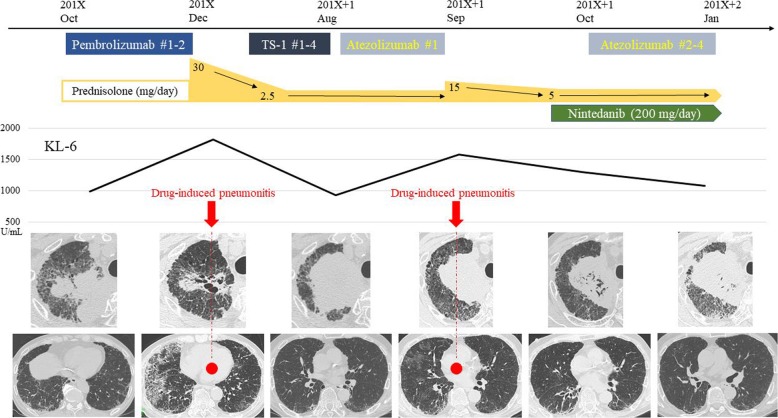Fig. 2.
Changes over time in Krebs von den Lungen-6 (KL-6) and the pulmonary lesion on chest computed tomography (CT). The patient underwent second-line treatment with pembrolizumab. He was diagnosed as having pembrolizumab-induced pneumonitis after two cycles because CT revealed bilateral ground-glass opacities and his serum levels of KL-6 were increased, although the size of the lung cancer tumors had decreased. He was administered prednisolone (PSL), after which his KL-6 levels decreased and the pneumonitis immediately improved. However, his lung cancer lesion continued to enlarge despite treatment with TS-1. Atezolizumab was then administered as fourth-line chemotherapy, but he developed atezolizumab-induced pneumonitis after 1 cycle. The re-escalated dosage of PSL improved his pneumonitis, and the serum levels of KL-6 decreased, and then nintedanib was started as additional therapy. Under careful observation with nintedanib (200 mg/day) and PSL (5 mg/day), atezolizumab was re-administered on day 1 of an every-21-day cycle. After three cycles, it remained stable without exacerbation of drug-induced pneumonitis

